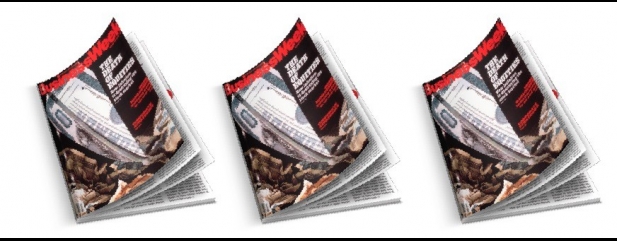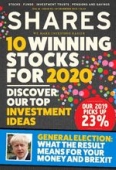Archived article
Please note that tax, investment, pension and ISA rules can change and the information and any views contained in this article may now be inaccurate.
Is inflation really dead and what can investors do if it isn't?

In April this year Bloomberg Businessweek ran the headline ‘Is inflation dead?’. Inside the magazine was a lengthy discourse on why inflation is dead and why it is likely to stay that way for some time.
It’s true that expectations for inflation are about as low as they have ever been, with many developed countries boasting negative short-term interest rates and around $15trn of outstanding bonds trading on negative yields.
However with unemployment rates at historic lows businesses are starting to feel the pinch from rising wages. Together with rising energy and other input costs, this could prompt them to raise prices to protect their profit margins.
Creeping inflation could cause central banks to not just roll back rate cuts but to raise rates further than expected, which would dramatically change the outlook for bonds and equities.
A POOR INDICATOR
Readers with a long memory will recall it was Businessweek – as it was previously known – which ran the story ‘The death of equities’ 40 years ago, blaming inflation for ‘destroying’ the stock market.
That headline more or less marked the start of a 20-year bull run which saw inflation tumble from its peak and the S&P 500 index rise more than 10-fold before the tech bubble burst in 2000. So is the magazine any better at calling the direction of markets or inflation today?
WHY IS INFLATION SO LOW AND WHY MIGHT IT RISE?
The main reason that official rates of inflation are so low is that the weak economic recovery from the global financial crisis has resulted in a long period of falling prices rather than rising prices.
The US Federal Reserve’s preferred measure of inflation is the core personal consumption expenditures (PCE) index, which has been running at around 1.7% annually, below the bank’s 2% target rate.
However US ‘core’ consumer prices – which exclude food and energy – are above 2% and are trending higher. UK core inflation is running at 1.7% but as recently as July it was 1.9%, just below the Bank of England’s 2% target rate.
The biggest threat to low prices is a tightening labour market. US hourly earnings are rising at a 3.5% annual rate while the ‘quits rate’ – the percentage of US workers quitting their jobs – is at an all-time high implying that employers will have to raise wages to keep staff.
Wages are rising across the G10, which is putting pressure on companies to increase the price of core goods to defend their profit margins.
THE ROLE OF DEBT, CURRENCIES AND CENTRAL BANKS
Inflation could also rise as governments increase the supply of debt. In the UK, the Conservative Party has ditched its previous ‘austerity’ mantra and promised to spend an extra £20bn it doesn’t have, while US president Donald Trump could announce a major spending plan to win re-election next year.
Bears of inflation point to the situation in Japan, which has much higher debt to gross domestic product (GDP) than either the UK or the US, and where inflation is just 0.2% despite repeated attempts to stoke prices higher.
Another source of inflation is exchange rates. When a currency falls sharply it raises the cost of imported goods which feeds into the consumer price index. The fall in sterling since the referendum vote in 2016 is likely to feed through eventually into higher prices.
Meanwhile the Federal Reserve is reviewing its policy of inflation targeting with a view to letting inflation rise above its 2% limit during booms, and other central banks are considering similar policies.
INFLATION WAVE THEORY
In his book The Great Wave, economist David Hackett Fischer looks at data going back to the early Middle Ages and concludes that inflation comes in very long waves, interspersed with periods of stability.
In periods of stability people tend to view life positively and have more children, which puts pressure on resources and causes a slow but steady rise in prices.
Once people adopt an inflationary mindset in their behaviour – such as demanding inflation-linked pay rises – this reinforces the upward spiral. Interestingly easy monetary policy typically doesn’t trigger inflation, but it amplifies the trend once it has started.
THINK ABOUT PROTECTING YOURSELF
One way to protect against the threat of inflation and avoid your returns being ‘nibbled to death’ is to look at long-dated index-linked bonds.
As inflation rises, so the government adds principal to the note’s value and the coupon.
Around 25% of the UK government bond or ‘gilt’ market is made up of index-linked bonds or ‘linkers’. There are a handful of funds which invest in index-linked gilts and there are some exchange-traded funds such as iShares Index-Linked Gilts ETF (INXG) for investors who want exposure to a range of maturities.
Important information:
These articles are provided by Shares magazine which is published by AJ Bell Media, a part of AJ Bell. Shares is not written by AJ Bell.
Shares is provided for your general information and use and is not a personal recommendation to invest. It is not intended to be relied upon by you in making or not making any investment decisions. The investments referred to in these articles will not be suitable for all investors. If in doubt please seek appropriate independent financial advice.
Investors acting on the information in these articles do so at their own risk and AJ Bell Media and its staff do not accept liability for losses suffered by investors as a result of their investment decisions.
Issue contents
Editor's View
Feature
- Top performing funds of 2019
- What were the key themes for small caps in 2019?
- Big companies with big decisions to make in 2020
- All change: an unusual period for FTSE 100 CEOs
- Tracking the performance of the biggest emerging markets
- Emerging markets: Views from the experts
- Is inflation really dead and what can investors do if it isn't?
Great Ideas
- Share pick for 2020: IG Design
- Share pick for 2020: Lloyds Banking
- Share pick for 2020: Redrow
- Our 2019 picks have smashed the market with a 23% return
- Share pick for 2020: Luceco
- Four great funds to buy for 2020
- Share pick for 2020: Kainos
- Share pick for 2020: Begbies Traynor
- Share pick for 2020: Hotel Chocolat
- Share pick for 2020: Centrica
- Shares pick 2020: Wizz Air
- Share pick for 2020: Schroders
 magazine
magazine











